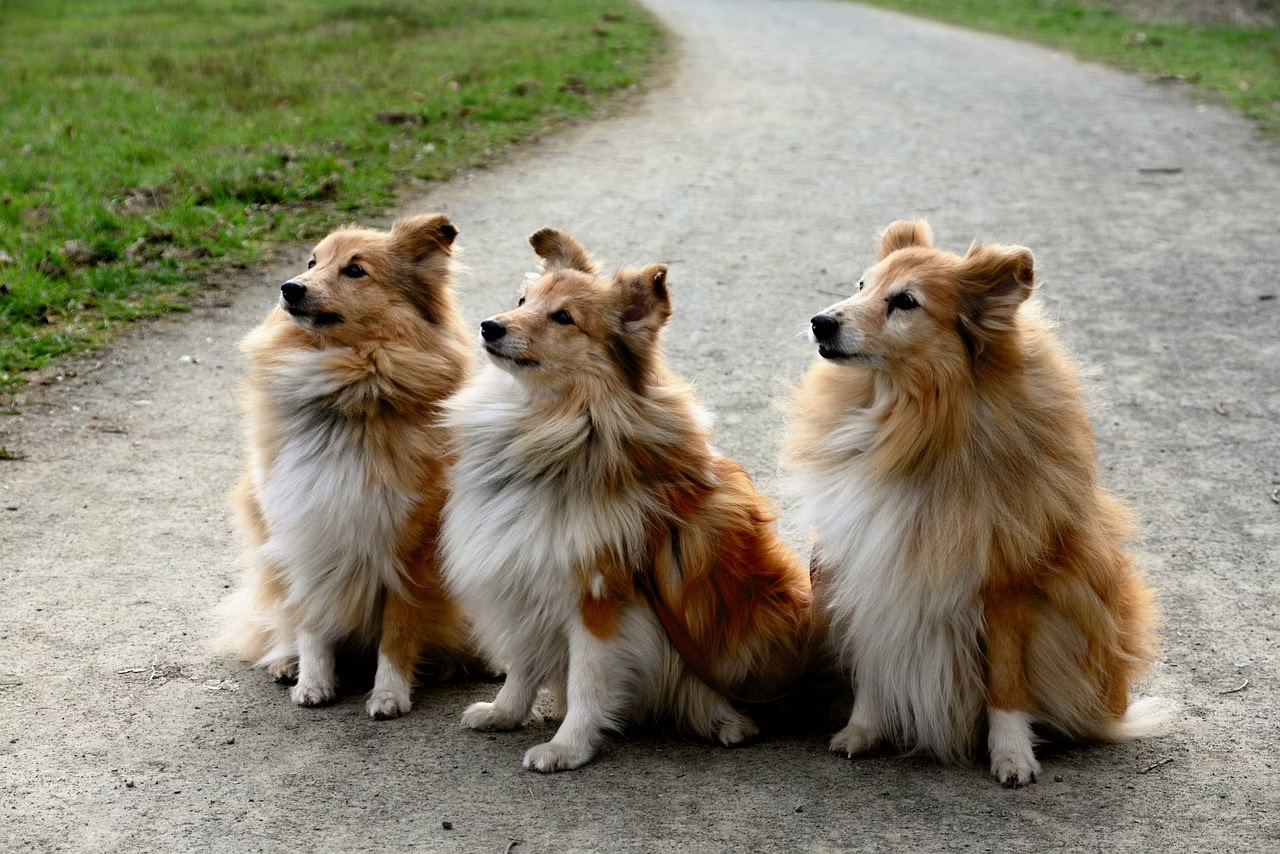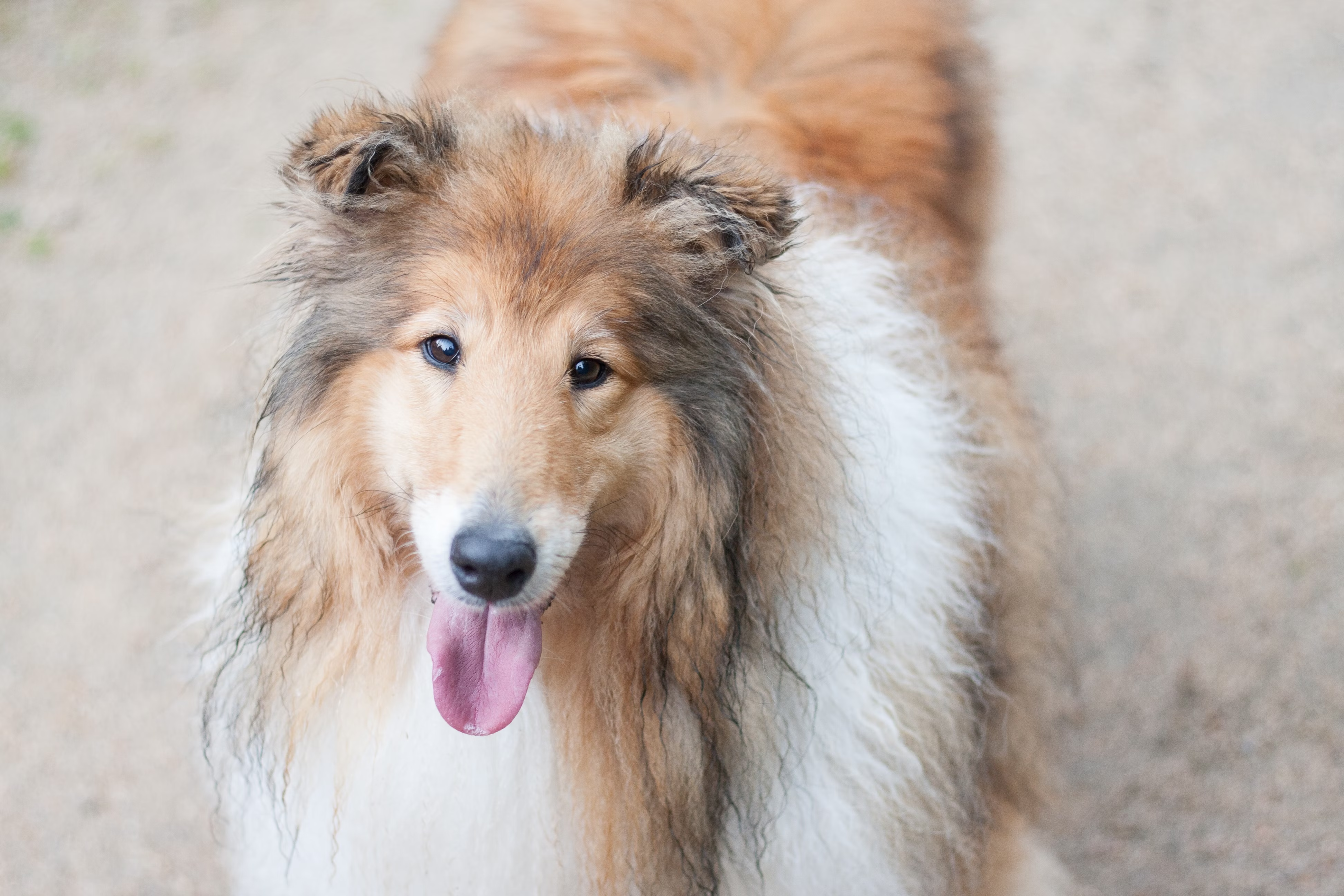Our goal at Wisdom Panel is to leverage DNA to help pets live long and healthy lives. One of the ways we achieve that is by providing breeders with genetic insights they can use to make the best breeding decisions for their future litters. So we’re thrilled to announce that Dermatomyositis (DMS) testing is now included in MyDogDNA and Optimal SelectionTM Canine DNA tests. This addition makes screening Collies and Shetland Sheepdogs for genetic disease predisposition a more streamlined and comprehensive process.
What is Dermatomyositis?
Most commonly diagnosed in Shelties and Collies, DMS is an autoimmune disorder that affects the skin and muscles. The severity of the disorder can vary, and signs often come and go over time. Clinical signs typically include scaling and crusting of skin in areas with minimal muscle, including portions of the face, ears, tail tip, legs, and feet. If the lesions are persistent, hair loss and scarring can also occur.
For some dogs, DMS may include muscle inflammation, known as myositis, which can vary in severity from mild pain to marked muscle wasting. Dogs with myositis may experience difficulty eating and drinking if the muscles used to chew food or swallow are affected. Anecdotal reports suggest muscle involvement may be more common in Collies than Shelties. In addition, some severely affected dogs may demonstrate a high-stepping or “goose-stepping” gait.
Typically, DMS-associated skin lesions begin by the time the dog is 6 months of age, with some showing signs as young as 7 weeks old. However, a few may begin in adulthood. An environmental factor such as vaccination, viral infection, or stress (e.g., rehoming) is often associated with the onset of DMS. Since the disorder is known to come and go, flare-ups can occur as the dog matures. And, hormone changes associated with estrus, pregnancy, and nursing may exacerbate signs.
A skin or muscle biopsy is considered the gold standard tool for diagnosing DMS. Due to the variability of the disorder between individuals, the prognosis is highly variable and dependent upon the severity of clinical signs.

Genetic influences for DMS
The development of DMS in dogs is complex and multifactorial and includes several genetic and environmental risk factors. Dr. Leigh Anne Clark and co-workers at Clemson University identified three underlying genetic risk variants for this disorder in Collies and Shelties. These variants are commonly known as A, B, and C, with each letter representing a different locus, or position, on the chromosome. More specifically, A locus indicates the PAN2 variant on chromosome 10, B locus indicates the MAP3K7CL variant on chromosome 31, and C locus indicates a particular dog leukocyte antigen complex (DLA-DRB1) on chromosome 12.
A correlation between higher numbers of A and B variants inherited, and dogs with signs beginning at an earlier age, was also noted in Dr. Clark’s study. This correlation was demonstrated by dogs who inherited two copies of each variant (four in total) often starting to show signs around 5 months of age, while dogs who only inherited two copies in total of the risk variants typically beginning to show signs near 18 months of age.
How does the new testing work?
The three separate variants, A, B, and C, in combination, influence the risk of developing DMS in Collies and Shelties. Wisdom Panel tests include the A and B variants, which are key for determining risk. Research has shown that 97% of clinically affected Shelties and Collies have at least one copy of variant A (also known as A locus or PAN2), and 88% of affected Shelties and 39% of affected Collies have at least one copy of variant B (also known as B locus or MAP3K7CL).
Why doesn’t the panel include the C locus?
While risk variant C does have an influence on DMS risk, the main drivers of risk are the A and B variants. As defined by the original research, a dog with two copies of the risk variant C can be found in all risk categories, whereas dogs with two copies of risk variants A and B are considered high risk. In addition, risk variant C (also known as C locus or variant DLA-DRB1*002:01) is extremely common in Collies and present in a high proportion of Shelties. That means excluding carriers of C from breeding could be detrimental to the gene pool.
Furthermore, dog leukocyte antigen, or DLA, encodes genes included in the major histocompatibility complex (MHC), which is critical in the immune response system of dogs. As the role of specific DLA complexes is poorly understood, it is worthwhile to view them as likely having both unknown benefits and risks depending on the situation. And in general, DLA diversity is thought to benefit the immune response.
Finally, testing for DLA is challenging for Wisdom’s main testing platform. Focusing on variants A and B allows us to include testing for DMS alongside Collie Eye Anomaly, MDR1, and over 270 disorders and traits found in MyDogDNA and Optimal Selection tests.

Summary of risk
Generally speaking, the risk level corresponds with the following genetic combinations:
- Dogs with two copies of both the A and B locus are at the highest risk
- Dogs with two copies of either the A or B locus are at moderate-to-high risk
- Dogs with one copy or less of each the A or B locus are at low risk
Breakdown of risk by genotype
To denote the presence of the tested variant, the corresponding capital letter (A or B) will be used for each copy of the variant —two in total, one inherited from each parent. The lowercase letter (a or b) indicates an absence of the tested variant.
- Low risk (0-5% lifetime risk) in genotypes aabb, Aabb, aaBb, AaBb, aaBB
- Moderate risk (33-50% lifetime risk) in genotypes AAbb, aaBB, AaBB, AABb
- High risk (90% and greater lifetime risk) in genotypes AaBB, AABb, AABB
*Please note that genotypes aaBB, AaBB, and AABb are included in multiple risk groups.
For breeding purposes, it is recommended to select mating pairs based on locus A and B genotypes so high-risk genotypes (AaBB, AABb, AABB) are avoided in the offspring.
Interested in learning more?
Following is some additional recommended reading:
- Evans JM, Noorai RE, Tsai KL, Starr-Moss AN, Hill CM, Anderson KJ, et al. (2017) Beyond the MHC: A canine model of dermatomyositis shows a complex pattern of genetic risk involving novel loci. PLoS Genet 13(2): e1006604. https://doi.org/10.1371/journal.pgen.1006604
- American Shetland Sheepdog Association: Dermatomyositis (DMS)
- Collie Health Foundation: Familial Canine Dermatomyositis











